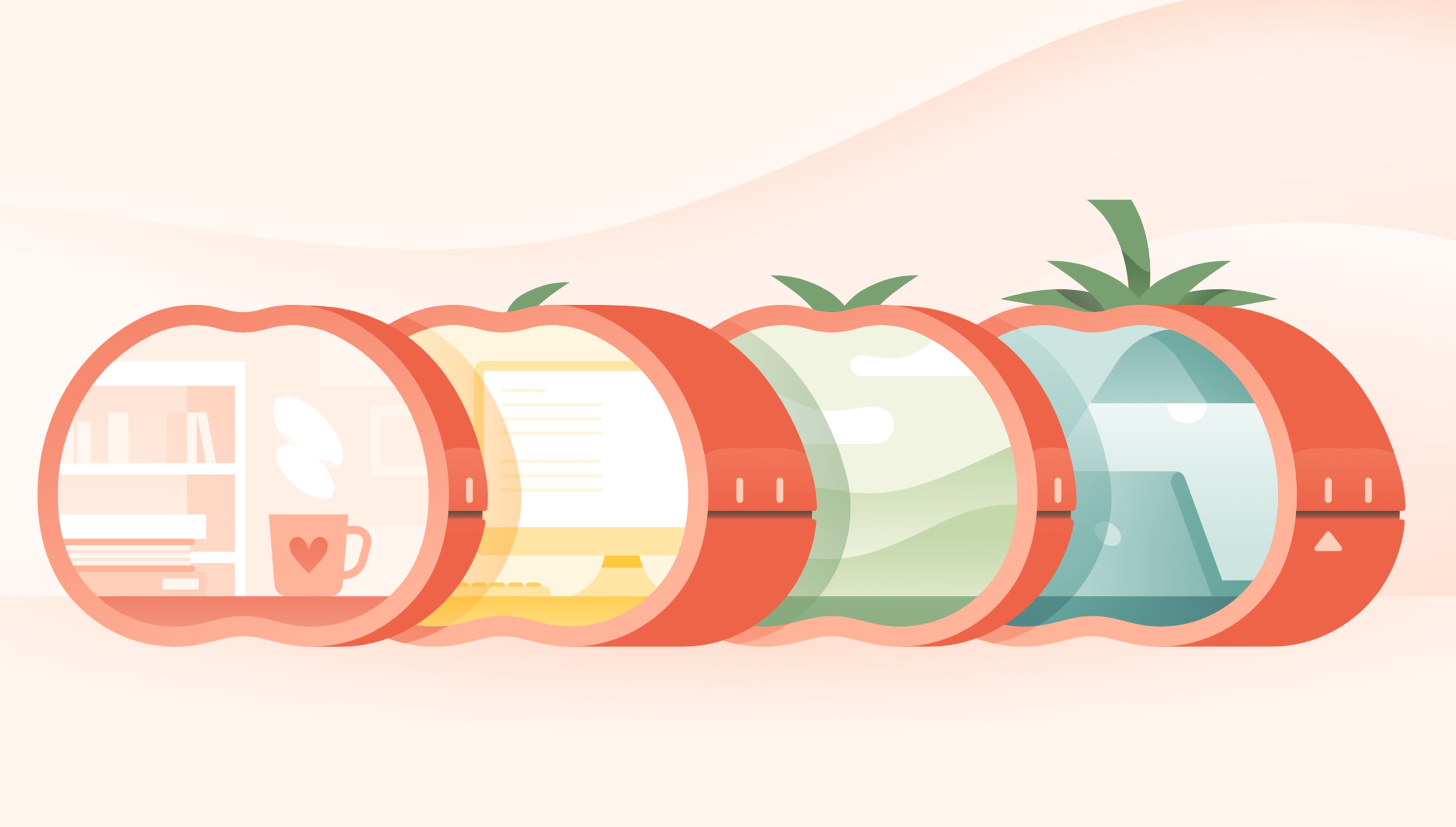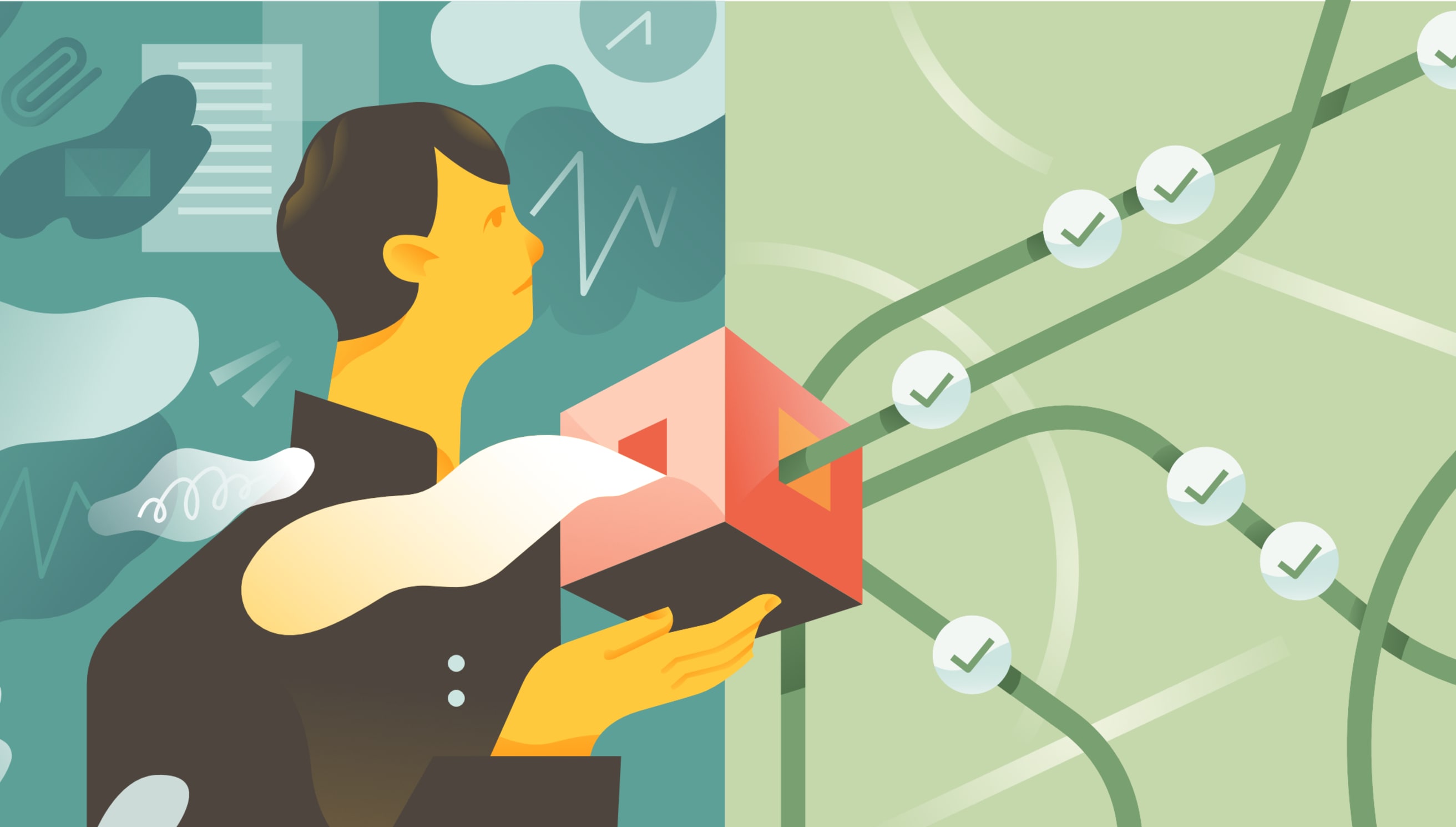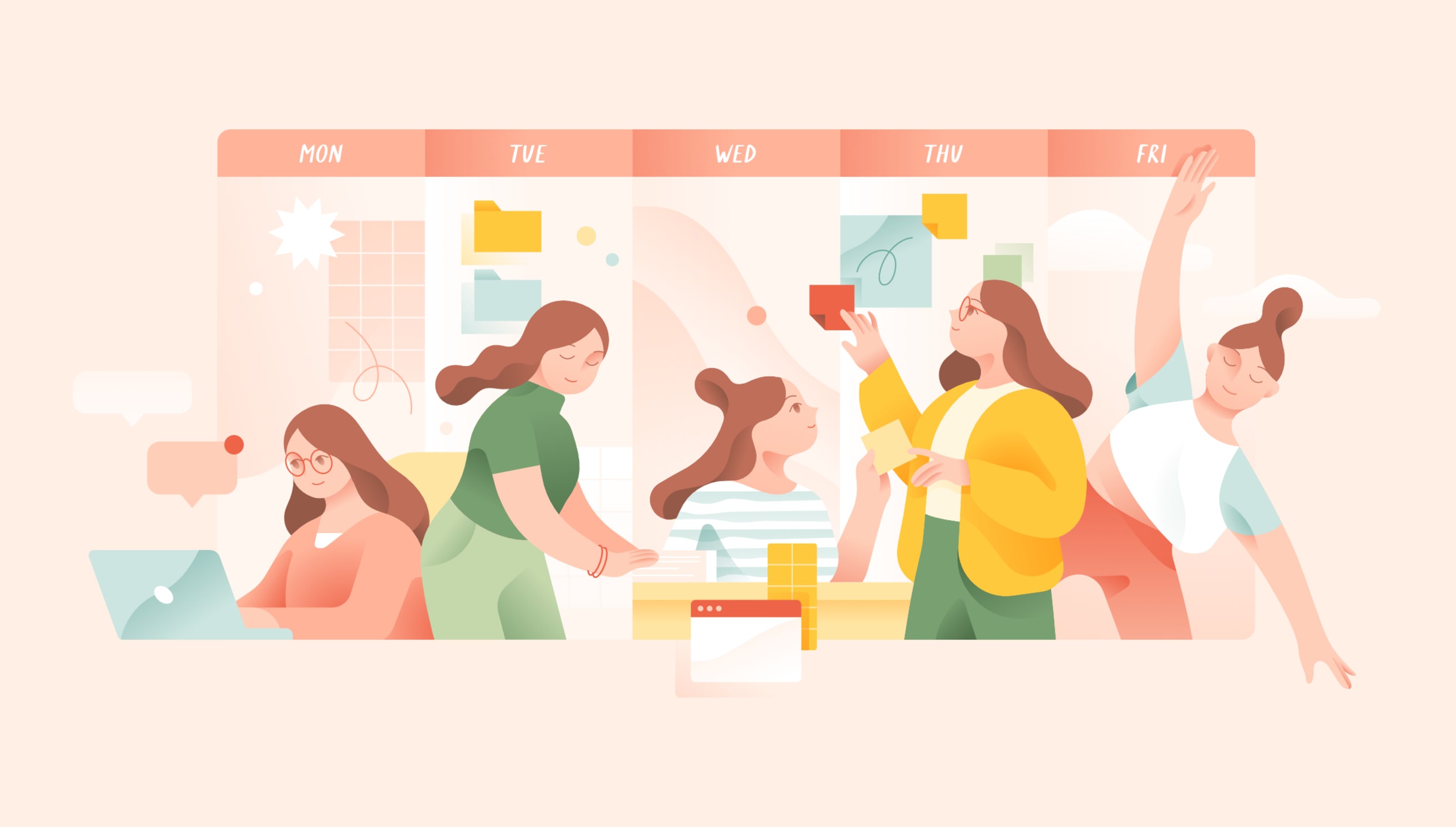Todoist makes the world’s #1 task manager to organize your work and life. Tell me more
“Most people overestimate what they can get done in a year and underestimate what they can do in a decade.”
This famous piece of wisdom (most commonly attributed to Bill Gates) holds true over shorter time spans, too. We tend to overestimate what we can get done in a day and underestimate what we can accomplish in a year.
How do we get around this quirk of human psychology? How do we make consistent progress toward our biggest goals without drowning day-to-day in our overly optimistic to-do lists? How do we overcome the mental resistance that comes with big goals and just get started?
The answer is a deceptively simple and memorably named productivity method called Eat The Frog.
We’ve made a companion video for Eat the Frog because everyone learns differently, and we know some of you prefer to watch instead of read. Check out that video below, or continue reading for a deeper dive.
Eat The Frog is perfect for anyone who:
Struggles with procrastination
Gets a lot done but isn’t making progress on the important stuff
Has a hard time sticking to a productivity system
Has trouble deciding what to work on at any given time
Feels overwhelmed by their to-do list
What is Eat The Frog?
How to eat the frog summary, identify the frog, eat it, and repeat
Eat the Frog is a productivity method in which you identify your most important task for the day — the one you’re likely to procrastinate on — and complete it first. We love this method because it:
Beats procrastination
Prioritizes high-impact tasks
Boosts your sense of accomplishment
Sets a positive tone for the rest of the day
Builds momentum to tackle other tasks
The Eat the Frog method was made well-known by productivity consultant Brian Tracy in his book Eat That Frog!: 21 Great Ways to Stop Procrastinating and Get More Done in Less Time. But the main concept is attributed to Mark Twain because of the quote:
“If it’s your job to eat a frog, it’s best to do it first thing in the morning. And If it’s your job to eat two frogs, it’s best to eat the biggest one first.”
At this point, you may be thinking, “ONE TASK? ARE YOU INSANE? I HAVE DOZENS OF THINGS I HAVE TO GET DONE EVERY DAY. I CAN’T POSSIBLY DO JUST ONE THING!”
But bear with me.
If you feel pulled in a million directions and overwhelmed by the number of tasks on your plate each day, so much that you don’t even know where to start, eating your frog first removes the one task that requires your most energy and focus. Then, you can keep working on your less important but more urgent tasks that usually get in the way of your goals.
Of course, you can always experiment to find out the exact number of tasks you can complete in a day and produce the most impact. For example, Doist’s founder and CEO, Amir Salihefendić, routinely checks off between 15 and 25 tasks in a day thanks to the Systemist method. However, he aims to complete at least one high-impact task daily. Agile Results call for three tasks a day, and the Ivy Lee method calls for six.
I’d encourage you to try out the most extreme — or simple — version first. There’s something about hyper-focusing on just one task that I’ve found makes this method particularly effective.
Why Eat The Frog works
The Eat the Frog technique should be in everyone’s productivity arsenal, even if you already use another method like time blocking or the Pomodoro technique. Here are some reasons why Eat The Frog can make your days more intentional.
It promotes a deep work habit
The most valuable work in today’s knowledge economy is almost invariably work that requires all your mental resources to be focused on one thing — think cognitively demanding tasks like coding, designing, writing, strategizing, and problem-solving.
Yet, according to productivity expert Cal Newport, the modern workplace isn’t set up to support that kind of distraction-free “deep work”. We’re distracted by so many emails, meetings, chat messages, and requests for input that we don’t have the time or space to focus on our highest-impact tasks.
Eat The Frog requires us to push back against all of those distractions — both external (others interrupting us) and internal (us interrupting ourselves) — and prioritize the actions that will actually bring us closer to our goals.
It ensures you’re setting your own agenda
All too often, the first thing we do when we sit down to work is check our email and incoming messages. Email and instant messaging tools put you in reactive mode — as soon as you start responding, you’ve ceded your time and attention to what other people want or need you to do.
This kind of reactive prioritization can quickly take over your workday. In contrast, Eat The Frog helps your time management efforts and asks you to put your agenda first before any other requests come in to derail your day.
It sets you up to win
As we discussed at the start of this guide, it’s human nature to overestimate what we can get done in a day, even when we know we’re likely to overestimate. That’s why productivity systems often make us feel like we’re constantly behind and failing to keep up.
When we feel bad, we’re more likely to avoid what’s making us feel bad in favor of things that boost our mood at the moment (i.e., procrastination). In contrast, Eat The Frog forces you to focus on less, even when you know you can do more. Any day that you eat your frog is a good day.
According to Brian Tracy, when explaining the truth about frogs:
“You will, at an unconscious level, begin to organize your life in such a way that you are continually starting and completing ever more important tasks and projects. You will actually become addicted, in a very positive sense, to success and contribution, helping you, ‘eat that frog,’ in the most pleasant way possible.”
We feel good when we follow through on the things we intend to do, which, in turn, makes it easier to continue doing them. When you experience a win first thing in the morning, you’re more likely to build momentum and good vibes to carry you through the rest of your workday.
It takes full advantage of your best work hours
We all know intuitively that not all work hours are created equal. The first hour of the morning, when your energy and willpower are high, is a helluva lot more productive than the hour after lunch, when all you want to do is curl up and take a nap.
Eat the Frog ensures that you’re using your best hours to do your most mentally taxing work and leaves less important tasks for times when you’ve already exhausted your brain power for the day.
It’s dead simple and infinitely flexible
While there are benefits to more complex and all-encompassing methods like Getting Things Done, maintaining them can often become just another task on your to-do list that you’re not getting to.
Eat The Frog is a simple method anyone can fall back on at any time with very little time or mental resources required. And it’s almost universally applicable. No matter your job, goals, or circumstances, we all have to contend with our limited time and energy.
Eat The Frog is a simple yet effective way to ensure that you’re making progress on something meaningful each day.
Tips for eating your frogs
How to eat a frog is simple, but there are a few tips that will help you apply the method consistently and successfully.
1. Decide on your frog
Also known as your Most Important Task (MIT), it falls in the category of important but not urgent in the Eisenhower Matrix. It’s the task that makes you feel a sense of dread or reluctance because of its complexity or significance. Whether it’s creating a report, calling your insurance, or making a tough decision. You already know what task I’m talking about.
2. Pick something you'll be able to complete in 1-4 hours
Your frog should take 1-4 hours or half a day of work (at most) to make it manageable. When tasks take too long or the goal isn’t clear enough, you can feel overwhelmed and fall into procrastination.
But when a task takes half a day or less, it becomes less daunting. With the end in sight, it’s easier for you to stay motivated and push through the task, helping you avoid distractions and improve focus.
Once you check off the frog from your list before lunch, you’ll get an early win along with an endorphin boost that will make you feel more energized and positive, helping you build momentum and carry that motivation for the rest of the day.
3. Break it down into smaller steps if needed
If your frog is going to take more than half a day, break it down into smaller steps that will take 4 hours or less. Your new frog will be the first concrete step on that list.
A task that takes multiple days broken down in a manageable sub-tasks in Todoist
For example, to complete a robust task like “Create a business plan,” you’ll have to break it into clear, manageable steps:
Complete competitive market research
Define your mission and vision
Outline your products or services
Craft a marketing and sales strategy
Write executive summary
Your frog for today might be the first step “Complete competitive market research.”
Todoist Tip
Todoist makes it easy to break tasks down into smaller sub-tasks that you can quickly check off to build momentum.
4. Resist the temptation to plan ahead
Once you start breaking your big tasks down, you may be tempted to schedule your frogs for the whole week or several weeks to come.
DON’T DO IT!
Accurately forecasting tasks into the future is nearly impossible and will only set you up for getting behind quickly and falling into the planning fallacy. One of the benefits of Eat The Frog is that you get to start fresh with a singular focus each morning. Identify and tackle your frogs one day at a time.
5. Prepare your frog the night before
Okay, you do need to plan a little bit ahead, specifically the night before your day. At this time, you’re close enough to be able to plan accurately, but still far enough that you won’t feel your mental resistance start to kick in.
Lifehacker founder and serial entrepreneur Gina Trapani sets the day’s pace by completing a list of high-impact tasks and when she finishes her day, she creates a new list for the next day.
For example, yesterday, at the end of my workday, I closed all of my computer tabs and apps but left my research and outline for this Eat the Frog guide open and in full-screen “Focus” mode. My frog today was to finish the first draft of this guide, so when I saw the outline this morning, I sat down to work on it.
It’s not a fool-proof method of staying on track, but it does provide a powerful reminder of what you’re supposed to be working on and decreases the chances you’ll get distracted looking for the right app, email, document, website, or whatever else you need to get started.
6. Eat your frog first thing
Eat the frog first thing in the morning when you sit down to work. If possible, don’t schedule meetings, check emails, browse the internet, or give in to the impulse of checking Instagram or TikTok — even if you think it will only take a minute.
Focus all of your mental energy on your frog and only your frog. When you block both external and internal distractions, your mind is less cluttered with minor issues, which can aid your focus and decision-making.
Not a morning person? No problem! The same principles of hyper-prioritization can be applied to any time of day that you feel the most energized, focused, and productive. The point is to take full advantage of your best work hours, whether that’s 8 am or 8 pm. When that time comes around each day, do your most important task first.
How to eat your frogs with Todoist
Implementing Eat the Frog in Todoist is simple – just import the Eat the Frog Setup. You can do this through the template gallery, or in-app.
Once you add this template, you’ll have two filters pinned as favorites on the left-hand navigation menu.
“Next Actions - Work” is for the tasks you’ll have to work on next but don’t have a fixed due date.
“Today’s Frog🐸” is, you guessed it, the frog you have to eat today.
This template includes a “frog” label that you can use to identify your frogs. Whenever you create a new task (and it’s a frog), type “@frog” next to the task name field. When you’re ready to schedule your frog for the next day, you can see a list of your frogs under Filters & Labels.
You can also add the label “@high_impact” to important tasks and check them to pick your next frog or view other relevant tasks.
If you want to see your frog first thing in the morning, you can set your Today’s Frog🐸 filter as your Start View in the General tab of your Todoist Settings. With your frog being the first and only thing you’re faced with, you won’t end up falling into the trap of checking just one email or doing something else that seems more urgent.
When it comes to productivity methods, it’s tempting to go for the more complex workflows and overlook the simple ones. However, the most effective methods are the ones we can stick to when we’re low on energy and fall back on when we find ourselves reverting to bad habits.
Whether you’re looking to overcome procrastination or bring more focus and intention to your workday, Eat The Frog is a deceptively simple yet powerful tool to help you get there.




